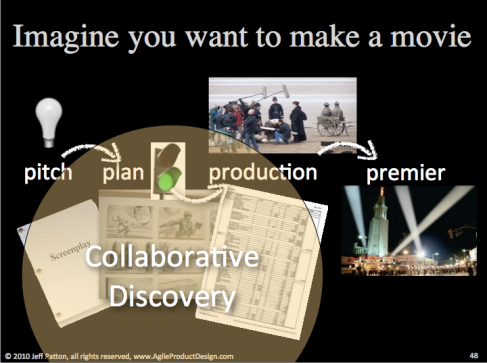Every time I do gardening (in our very little garden area) I get struck by the natural flow of clean-up thinking. I don’t know how other amateur home garderners do, but it’s hard for me to think of doing it without the non-consious thinking of cleaning at the same time as putting new features (plants) on.
The other day I bought some new flowers to put in pots on our stair – our new little beautiful features you could say if you’re in system development business. To be visible for us and visitors (users I guess) as soon as you come to the stair. Also we have some sad plants that severerly needs re-planting or they’ll die or look very ugly.
Before putting them on the stair I need to do some work – that is planting the flowers in some pots with new mould.
I need just to bring out the pots and mould bag from under the stair, and Ouch!! here it looks like a mess! (Ever got that feeling when working on software??)
What to do? Ignoring the mess? Just drag out the (dirty) pots from the spider nets, close my eyes and plant my new features (flowers).
I already know what will be the consequence of that decision.. the stair will have some bad looking dirt under it and next time it will be even worse to put new features or re-plant old features (flowers) in the garden.
I do a quick calculation of risk. What IF I will now do the not so pretty work of cleaning under the stair? What could happen if I do that now?
Worst case scenario is that I start cleaning and get interupted by some unexpected event today that will make me leave the garden for some more important or social event. Will my plants survive another day without getting new pots?
Well, ONE day or maybe two they might survive. Some of them are more sensitive. I take the risk of cleaning, I know it’s worth it.
I start dragging out the stuff from under the stair, and start cleaning. Washing up the pots, brush away the dirt, hunting away a huge spider keeping my head cold since little son is watching (mummy’s not bothered by a little friendly black huge spider at all… right).
Have placed the new plants in a friendly well organized spot so they won’t fall.
And actually, the cleaning did take some work but not as bad as it looked like at the first glance. I made some decisions during the action to NOT clean exactly every garden tool, every little pot plate with water. While cleaning under the stair I could see the bikes connected to it also could need some washing up. But hell no. Stick to the scope here. The mission was to put new features (plants) on the stair and taking care of some old ones, not to fix the bikes.
Be aware of scope and mission.
Now to the plants. Quick risk calculation. I might get interrupted. With two little kids that wouldn’t be a surprise. So which of the plants could die first if they don’t get new mould?
One new one and one old one it seemed. So I start with them of course. And just them.
Start with the high risk items!
If something will happen on the way and I have to stop, at least these two will not die and the other ones will probably survive a few days.
For very harsh interruptions such as urgent long time sickness, I cannot plan. The features (plants) I guess have to die if something really bad would happen.
The first two plants get in their pots.
Next item, hmm.. which one. I’ve promised husband (stakeholder) to re-plant a sad old one with little chance of survival). I have another new one waiting. Hm..
Well, not a very complex environment – in this case it really didn’t matter that much which I chose. I went for the new one and got time to re-plant the old one – since I already had a nice clean pot to put it in it was quite quick done.
In a complex environment I would have done some calculation, maybe a user test with my husband and son on how important the old sad one was compared to the new flowering one. They would have made the decision.
The message here is just:
In our daily lifes the effect of cleaning and prioritization is so obvious. It’s natural.
How do you think about cleaning your system stuff? Be it code, tests, requirements, documentation, storage..? Do the same natural law of risk calculating, mission focused, cleaning apply?
If you act the same way when working in the garden (or whatever item-cluttered hobby you might have) as when working with systems development how would your garden (fishing equipment, book shelf, diving gear, antique collection, whatever) look like by now?





Senaste kommentarer